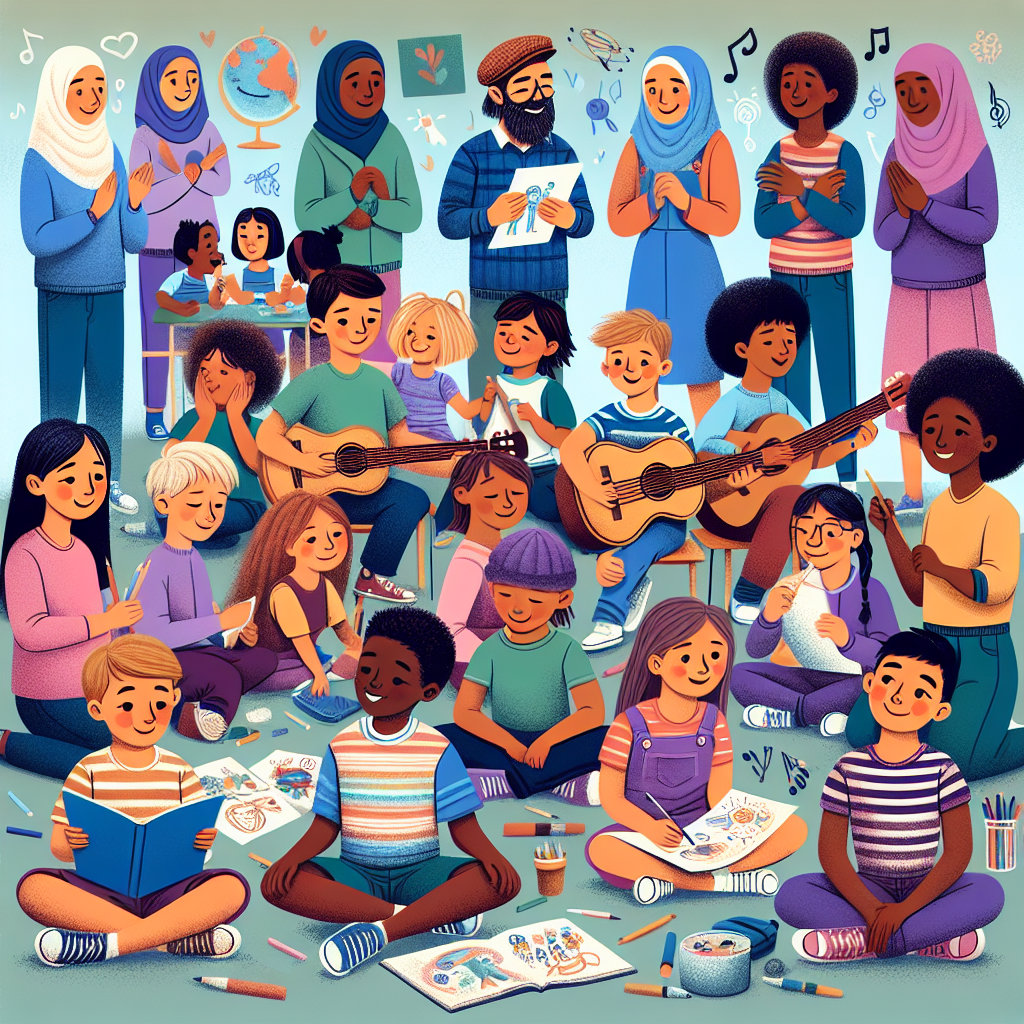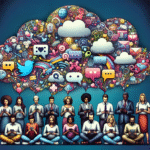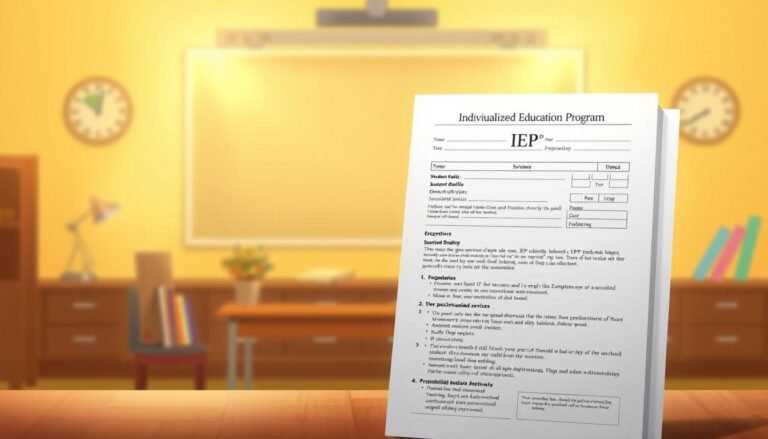
Celebrating Uniqueness: How to Nurture Self-Esteem in Children with Learning Disabilities
Introduction
In a world that often prizes conformity, celebrating individual differences becomes crucial—especially for children with learning disabilities. These children possess unique ways of learning and engaging with the world, yet they often find themselves stigmatized or undervalued. The journey to self-acceptance and confidence can be particularly challenging for them. "Celebrating Uniqueness: How to Nurture Self-Esteem in Children with Learning Disabilities" addresses this pivotal issue. This in-depth exploration provides practical strategies, real-life case studies, and empowering insights to guide parents, educators, and caregivers in fostering resilience and self-worth in children who learn differently.
Understanding Learning Disabilities and Self-Esteem
What Are Learning Disabilities?
Learning disabilities (LD) refer to a range of disorders that affect the ability to read, write, speak, and calculate. According to the National Center for Learning Disabilities, approximately 1 in 5 children in the U.S. has a learning disability. Common types include dyslexia, dyscalculia, and attention deficit hyperactivity disorder (ADHD).
The Link Between Learning Disabilities and Self-Esteem
Children with learning disabilities often face unique challenges that can adversely affect their self-esteem. They might struggle to meet academic expectations, feel isolated from peers, or experience negative feedback from teachers and adults. The result? Many develop a negative self-image, which can lead to anxiety and depression.
Celebrating Uniqueness: Recognizing Strengths
Recognizing and fostering a child’s unique abilities is an essential step in building self-esteem. Every child, regardless of their challenges, has their strengths and talents.
The Importance of Strength-Based Approaches
Identify Interests and Talents: Actively engage children by asking them about their interests. Is it music, sports, art, or perhaps writing? Emphasizing their strengths can shift focus away from challenges.
- Encourage Participation in Extracurricular Activities: Schools and communities often offer programs that can help children discover their passions—be it art classes, music lessons, or sports teams. These venues provide opportunities for children to excel and be celebrated for their unique talents.
Case Study: The Power of Art
Consider the case of 10-year-old Emma, who struggles with dyslexia. Instead of focusing solely on her reading challenges, her art teacher recognized her exceptional talent in painting. By encouraging Emma to express herself through art, she not only nurtured her creative skills but also helped her build confidence and self-worth. Emma’s self-esteem improved dramatically as she began to receive recognition and praise for her artworks.
Creating an Environment of Acceptance
Celebrate Differences: Parents and educators should actively promote acceptance of diversity. Highlighting stories of individuals with learning disabilities who have achieved greatness can help children see that differences are valuable.
- Facilitate Open Discussions: Encourage children to express their feelings about their challenges and strengths. Conversations about their experiences can be healing and reaffirming.
Case Study: Building Bridges through Dialogue
In a diverse classroom in Baltimore, a teacher implemented weekly sharing circles where students talked about their unique challenges and strengths. One student, Sam, who had ADHD, openly discussed how he often felt misunderstood. This led his classmates to share their experiences too. The atmosphere of acceptance fostered increased empathy and support, thus enhancing Sam’s self-esteem.
Navigating Academic Challenges
Providing Tailored Support
Children with learning disabilities often require customized educational approaches. It’s essential to adopt effective teaching strategies, such as:
Multi-Sensory Learning: Utilize different learning styles (visual, auditory, kinesthetic) in lesson plans. This can help kids grasp concepts more easily and confidently.
- Assistive Technology: Tools such as text-to-speech software and apps designed for children with learning difficulties can support learning and offer new avenues for success.
Building Collaborative Relationships
Strong, collaborative relationships between children, parents, and educators are crucial. Seamless communication allows parents to understand school challenges while educators gain insight into a child’s home environment.
Case Study: A Triumvirate Approach
In an inclusive school setting, Jason, a boy with dysgraphia, received tailored support from his teachers, input from his parents, and guidance from a special education advocate. As everyone worked together, his self-esteem blossomed; he became more involved in class discussions and eventually shared a poem he had written.
Fostering Social Skills
Encouraging Friendships
Social interactions can be particularly tricky for children with learning disabilities. It’s vital to provide guidance and tools to help them navigate social scenarios:
Role-Playing Activities: Simulated social situations empower children to practice conversation skills, reading body language, and responding to peers.
- Peer Buddies Programs: Pairing children with peers can create opportunities for friendship and collaboration, allowing children with learning disabilities to feel included.
Case Study: Friendship Formation
In a mentorship program, a high school student named Lily was partnered with a middle school student who had ADHD. As they participated in joint activities, the older student guided the younger one in social situations, ultimately helping him make new friends and feel more accepted at school.
The Role of Family in Self-Esteem Development
Family Support Systems
Parents and siblings considerably impact a child’s self-esteem. When families practice unconditional love and acceptance, children are more likely to develop a positive self-image.
Create a Strength-Based Family Culture: Regularly acknowledge and celebrate each family member’s strengths.
- Encourage Risk-Taking: Allow children to step out of their comfort zones by supporting them in trying new activities—whether sports, clubs, or artistic expression.
Case Study: Family Celebrations
The Martinez family adopted a tradition of celebrating "successes," no matter how small. Antonio, who has dyslexia, received praise for simply reading a book aloud to his younger sister. This practice showed him the value of his efforts, thus enhancing his confidence.
Inspiring Resilience: The Power of Grit
Teaching Resilience Skills
Resilience is a critical life skill for all children, especially those with learning disabilities. It involves overcoming challenges through perseverance.
Model Grit: Parents and teachers can demonstrate persistence in their endeavors—showing children that setbacks are part of growth.
- Set Achievable Goals: Help children to set small, achievable goals. Celebrate when they surpass these milestones as a powerful reinforcement of their capabilities.
Case Study: Overcoming Obstacles
When Thomas struggled with daily spelling tests, his tutor helped him set weekly goals for improvement. After weeks of dedicated practice, Thomas began seeing progress. Each little success contributed to building his resilience, instilling a belief that he could overcome academic hurdles.
Encouraging a Growth Mindset
Transitioning Mindsets
Teaching children about growth mindsets can transform their perspectives on challenges. Instead of viewing learning difficulties as proof of inadequacy, they learn to see them as opportunities for growth and development.
Praise Effort Over Results: Recognize the hard work and effort put into tasks instead of just the outcome.
- Promote Learning from Mistakes: Encourage children to view failures as an integral part of learning.
Case Study: The Change in Perspective
Sarah, struggling with math, began to feel discouraged. However, her teacher introduced the concept of growth mindset. By focusing on her effort in solving math problems, Sarah started to see mistakes as learning experiences. This shift greatly improved her self-esteem and engagement with math.
Conclusion
Celebrating Uniqueness: How to Nurture Self-Esteem in Children with Learning Disabilities is not just a guide; it’s a journey towards understanding and embracing our children’s distinctive abilities. Through supportive environments, open communication, and a focus on strengths, we empower children to rise above challenges and develop a positive self-image. The journey may be fraught with hurdles, but with the right tools and support, every child can blossom.
Takeaway: Small Seeds of Change
The simple act of recognizing and celebrating each child’s unique differences can sow the seeds for a lifetime of confidence and resilience. Embrace the uniqueness of learning, and nurture the budding self-esteem of children with learning disabilities.
FAQs
What are some common learning disabilities?
- Common learning disabilities include dyslexia, dyscalculia, and ADHD. Each affects how a child processes information differently.
How can I help my child recognize their strengths?
- Engage them in hobbies they enjoy, praise their efforts, and showcase their talents. Use activities that highlight their unique abilities.
Are there effective therapies for children with learning disabilities?
- Yes, therapies such as occupational therapy, speech therapy, and cognitive behavioral therapy can help children navigate challenges related to learning disabilities.
What are practical strategies for building self-esteem at home?
- Create an affirming environment, celebrate small successes, and teach problem-solving skills while encouraging open communication.
- How can schools better support students with learning disabilities?
- Schools can offer individualized instruction, adopt inclusive practices, and provide access to assistive technologies to help students thrive in academic settings.
By reinforcing positive attitudes toward learning in children with disabilities and seeking to nurture their unique capabilities, we pave a path toward brighter futures. Celebrating their uniqueness is not just beneficial—it’s essential.
















